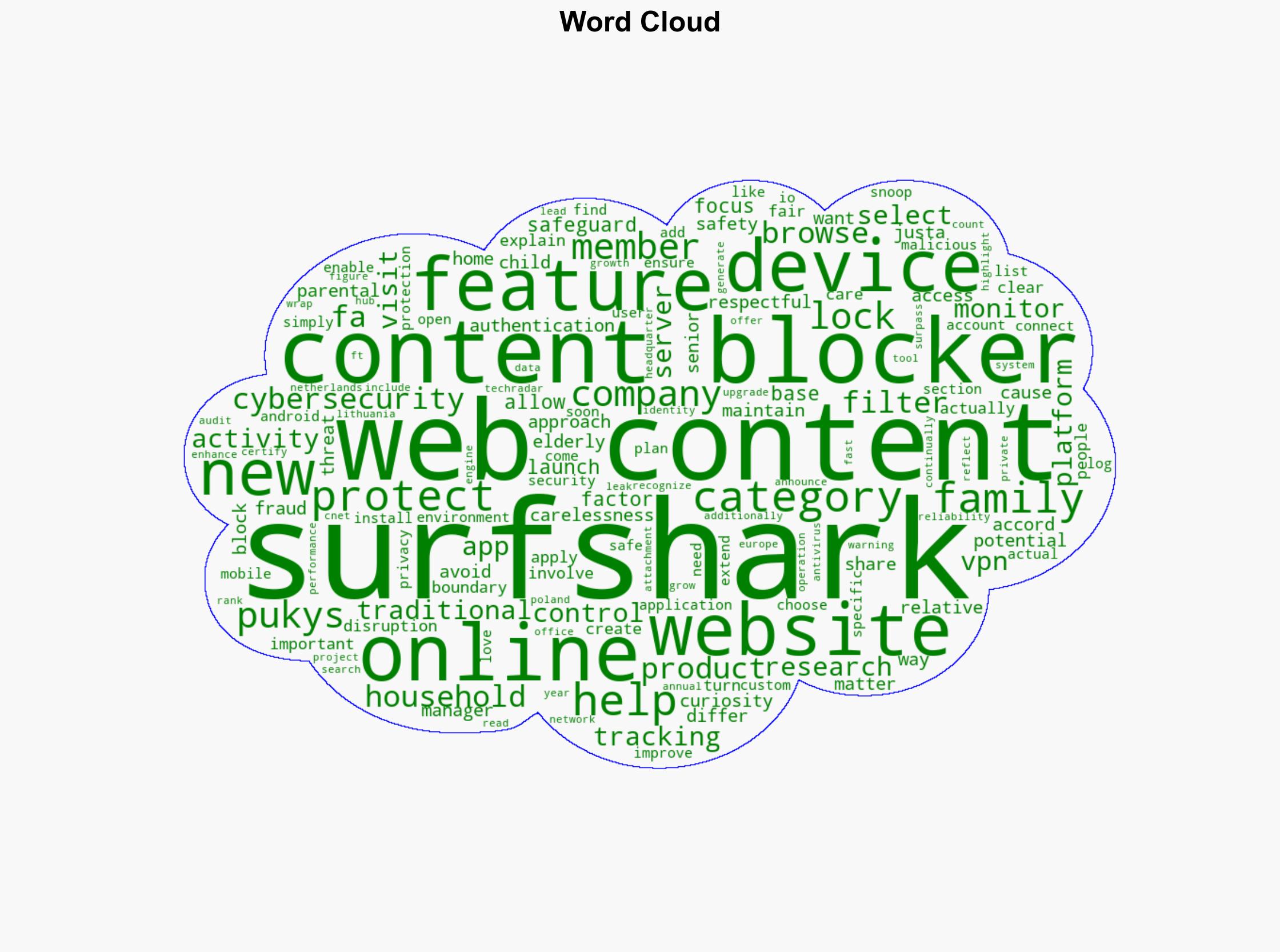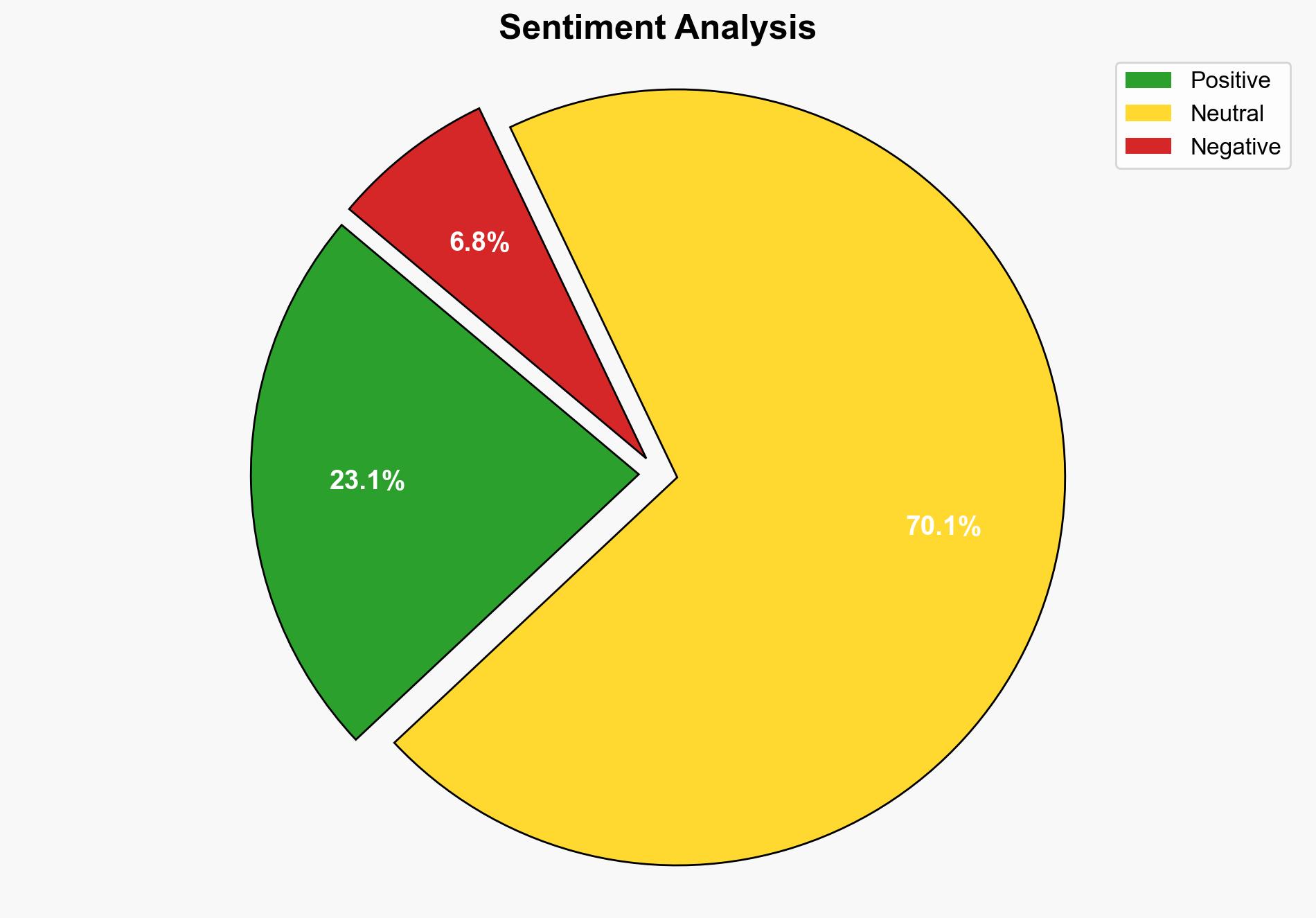Surfshark launches a privacy-first web content blocker – GlobeNewswire
Published on: 2025-10-24
Intelligence Report: Surfshark launches a privacy-first web content blocker – GlobeNewswire
1. BLUF (Bottom Line Up Front)
Surfshark’s introduction of a privacy-first web content blocker represents a strategic move to enhance household cybersecurity by offering customizable content filtering and protection against online threats. The most supported hypothesis is that this feature aims to expand Surfshark’s market share by differentiating its product offerings in a competitive cybersecurity market. Confidence level: Moderate. Recommended action: Monitor Surfshark’s market performance and user feedback to assess the feature’s impact on consumer behavior and cybersecurity trends.
2. Competing Hypotheses
1. **Market Differentiation Hypothesis**: Surfshark’s web content blocker is primarily a strategic initiative to differentiate its product line in the competitive cybersecurity market, attracting privacy-conscious consumers and families seeking enhanced online safety.
2. **Regulatory Compliance Hypothesis**: The feature is a proactive measure to align with anticipated regulatory changes regarding online privacy and content control, positioning Surfshark as a compliant and forward-thinking entity in the cybersecurity industry.
Using ACH 2.0, the Market Differentiation Hypothesis is better supported by the emphasis on user control and privacy, aligning with consumer demand for customizable security solutions. The Regulatory Compliance Hypothesis lacks direct evidence in the provided text but remains plausible given global trends in digital regulation.
3. Key Assumptions and Red Flags
– **Assumptions**: It is assumed that there is a significant consumer demand for privacy-first content blocking solutions. Another assumption is that Surfshark’s technological infrastructure can support the new feature without compromising performance.
– **Red Flags**: The absence of specific data on the feature’s effectiveness and user adoption rates. Potential overreliance on marketing language without empirical evidence of security enhancements.
– **Blind Spots**: Lack of information on competitor responses and potential vulnerabilities in the new feature.
4. Implications and Strategic Risks
The introduction of this feature could set a precedent for other cybersecurity firms, potentially leading to an industry-wide shift towards more privacy-centric solutions. However, if the feature fails to deliver on its promises, it could damage Surfshark’s reputation. Additionally, increased regulatory scrutiny on privacy tools could pose legal challenges.
5. Recommendations and Outlook
- Monitor user feedback and adoption rates to gauge the feature’s success and identify areas for improvement.
- Engage in competitive analysis to anticipate and counteract potential responses from other cybersecurity firms.
- Scenario-based projections:
- Best: The feature becomes a market leader, significantly boosting Surfshark’s market share.
- Worst: Technical flaws lead to security breaches, harming Surfshark’s reputation.
- Most Likely: Moderate adoption with gradual improvements based on user feedback.
6. Key Individuals and Entities
Justa Pukys is mentioned as a senior product manager at Surfshark, indicating a leadership role in the development and promotion of the web content blocker.
7. Thematic Tags
national security threats, cybersecurity, consumer privacy, digital regulation




